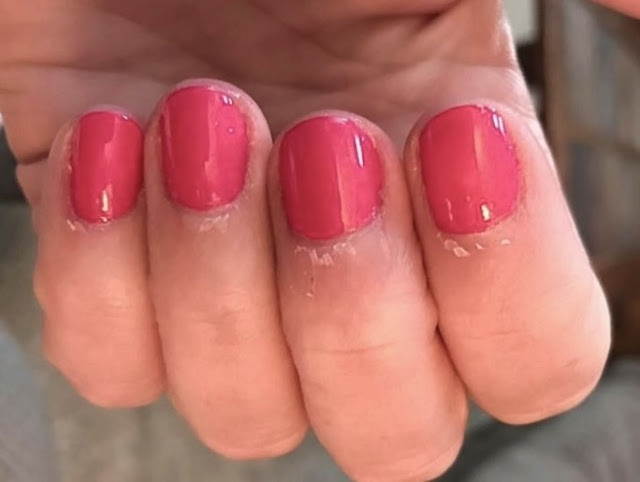A friend of one of our hair stylists asked why her cuticles look like this. She recently had a manicure (not from me!!!) and the skin started fraying up a day or so later.
Why is that?
What Causes Frayed, Peeling Cuticles
When we refer to the cuticle, we are talking about the skin at the base of the nail, but it is really more complicated than that.The skin at the base of the nail is called the eponychium. It's living skin.
The cuticle is the dead cell part of the eponychium.
The cuticle is the thin white looking piece of skin that sheds from underneath the eponychium. It is dead tissue that sticks on the nail and moves out on the nail as it grows forming a protective barrier between the nail plate and the living eponychium.
The "cuticles" (really the eponychium) are pushed back during a manicure revealing the thin skin that is stuck to the nail, the true cuticle.
The "cuticles" (really the eponychium) are pushed back during a manicure revealing the thin skin that is stuck to the nail, the true cuticle.
The true cuticle can be gently scraped and loosened from the nail using a cuticle pusher or an orangewood stick then trimmed. It can also be lightly file off with a gentle nail file.
The eponychium should not be cut. Cutting the results in rough, hard, fraying skin a few days after the cutting.
The eponychium should not be cut. Cutting the results in rough, hard, fraying skin a few days after the cutting.
"Cuticle" cutting is a key part of a Brazilian Manicure. I never recommend them. My sweet Brazilian friend get them because she says they make her nails look longer. The trade off is, her shin is alway frayed looking.
It is okay to trim off hangnails or loose pieces of skin.
Keep the eponychium looking healthy and moist by pushing it back then applying oil and hand lotion. Using a scrub will also keep them looking good.
Keep the eponychium looking healthy and moist by pushing it back then applying oil and hand lotion. Using a scrub will also keep them looking good.
How to Heal Fraying Cuticles
So maybe you did get a Brazilian manicure, your eponychium was cut and now you have frayed up skin that pulls and gets sore.It will take a while to get the skin looking smooth and healthy again.
Start with no more cutting of the eponychium. You can very gently push back but no eponychium cutting.
Gently trim, don't pull, the frayed pieces of skin. Pull the skin will leave sore open wounds.
Apply a thick moisturizer to the base of the nails a few times a day. Cuticle oil (such as Cuccio Cuticle Conditioner), coconut oil and olive are also very healing. Petroleum jelly will also work.
Cuccio Conditioner with Milk And Honey
This wonderful cruelty free cuticle oil contains cold pressed oils and vitamins to heal and restore the damaged cuticles, cracked skin and brittle nails. $6.15
Buy on Amazon Manicures will help repair and beautify the fraying skin as it heals.
It's going to take some perseverance, but the skin will heal and be smooth again. Remember this the next time you get a manicure. Tell your nail tech to only cut the true cuticle, any hangnails, and loose pieces of skin that are sticking up.
Have a Beautiful Day!
PS: Thanks for using my amazon💋
As an Amazon Associate, I earn from qualifying purchases at no cost to you. That keeps my blog running and supports the care of animals in need!😸
As an Amazon Associate, I earn from qualifying purchases at no cost to you. That keeps my blog running and supports the care of animals in need!😸





Comments
Post a Comment